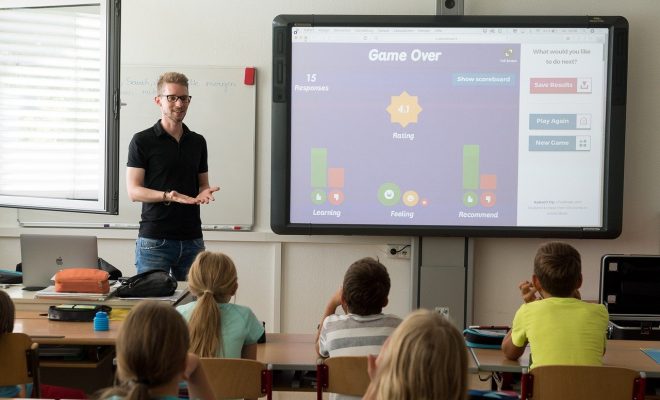Virtual Rewards That Work for In-Person and Online Classrooms

Rewards are often a necessity for behavior management systems in school. Teachers use rewards to motivate and celebrate the achievements of students, and you shouldn’t dismiss them so easily. Children need motivation, especially when it comes to education; rewards are a good way to encourage every student to give their best. Virtual rewards should be added to the list of prizes. They have merit on so many levels and can be useful for those who attend online classrooms.
So, what virtual rewards could you offer your students?
An Educational eBook
One of the best virtual rewards can be an eBook. While this might not sound overly exciting yet, it can be a great way to encourage children to read. Of course, you could send an educational but entertaining book. Or, let the child choose from a list of popular age-appropriate books. For example, create a list of 5 books and let the child choose. It’s a nice reward and encourages them to read too, so it’s a win-win for everyone.
Virtual Coupons
Digital coupons allow a child to use them towards a real-life treat, such as a game, toy, or item of clothing. It’s a great reward for bigger milestones, such as acing an important test or getting perfect attendance for 3 months. These coupons can be redeemed at many stores and is a nice way to reward a student for their efforts.
Virtual Gift Cards
Gift cards might be more suited to older children or teenagers, but they can be a fantastic reward when a child goes above and beyond what’s expected of them. For example, the child begins to term a minus D student. By the end of term, he has knuckled down and become an A-plus student. That is a great achievement, and you can reward the student with a virtual gift card. It’s a great reward and encourages them to continue on the right path.
Digital Stickers for Elementary and Younger Children
Stickers are simple rewards, but students can collect them over the year and see who has done best in class. Or you can offer a small reward. It’s a useful way to encourage younger children to study hard and behave in class. While it’s a small reward, it can have a huge impact.
Digital Tags
Like digital stickers, students collect tags. Each is given for achievement, such as getting top marks in all history tests or for being a good listener. Students can collect them and see how many they can get before the year is out. It’s a nice idea and something that gives a child a confidence booster at school.
Unlock Classcraft Features
Games are great tools to encourage children to learn and focus better. They can also be educational. Classcraft is a great game that can help students learn. It’s a free game, and as a reward, you can unlock features for students who do well.
Award ClassDojo Points
ClassDojo is a great tool for parents and teachers to communicate. It’s free and can easily award points for class behavior. You get to decide how the points are redeemed, such as giving a student a homework pass or a sweet treat. Parents can team up to encourage children too. For instance, redeem points for a home treat, such as an hour of extra screen time for one week or skipping chores. These are useful ways to encourage students at home and school.
A Virtual Field Trip
While this is more of a reward for the entire class, it’s a great option to consider. You can go on a virtual field trip anywhere in the world. You can visit national parks, zoos, aquariums, and much more. It’s a fun way to spend an afternoon and can encourage children to learn about the subject. For instance, you take a virtual field trip to a zoo. You learn the zoo is part of a charitable organization aimed at rehoming endangered animals. So, let the class create a short essay on the subject. It’s a great learning tool as well as a reward.
Share Videos and Give Shout-Outs Online
These are tricky areas to navigate with children because if you want to publish names or photos online, you need to get permission from the student and parent first. Some might not want the attention either. If you want to use shout-outs online, keep them simple. For instance, don’t use a student’s full name.
‘Giving a shout-out to Katie B., who aced her history test.’ This is a simple shout-out that doesn’t reveal too much about the student.
‘Congrats to J.B. for his science fair win.’ You’re rewarding the student without giving out too much personal information, which is important.
Sharing videos with students can be a great reward; however, you need to be extra careful with the type of content you share. For example, political or religious content can be a difficult area to traverse, even when it’s educational. If you want to share content, ensure it is done so in the correct format, so no offense is given. You could, however, opt for a short animation video that the student (or their parents) picks.
Let the Student Choose the Classroom Video or Playlist
It’s not uncommon for videos to be shown to the classroom as a treat or are subject-related. Sometimes, teachers like to play music while children study. So, you could turn these things into rewards. For instance, let the child choose the next 2 songs played in class or the next movie shown. Of course, you must check the content before it’s played. This keeps you on safe ground and allows you to determine whether it’s age-appropriate for the students. Again, you don’t want to offend any student or parent.






